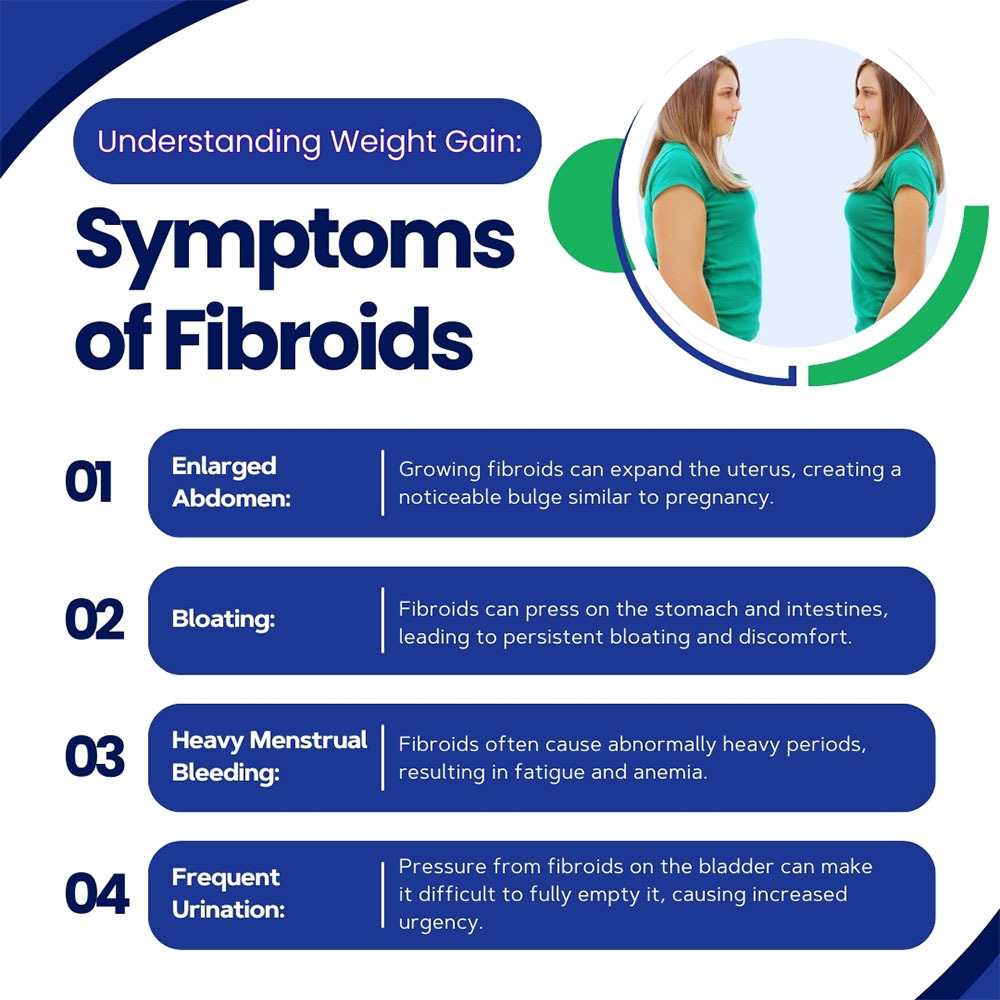Fibroids can lead to uncomfortable symptoms ranging from pelvic pain to heavy menstural periods, without having to deal with fibroids weight gain too. But the odds of this occurring are high due to the bloating fibroids cause and the growing size of these untreated non-cancerous tumors. Usually, when fibroids are removed successfully or go away on their own, you lose the excess weight as well. To be sure you get complete relief from fibroids weight gain, however, call the expert at the Downtown Vein & Vascular Center for an appointment. You’ll find a number of effective fibroids weight gain treatments that work.
Is Weight Gain from Fibroids Possible?
Uterine fibroids could be part of the reason for your weight gain, especially if you notice an increasing girth in the lower abdomen. These benign (non-cancerous) tumors develop in, around, and inside the uterus and can lead to severe symptoms, including bloating, excessive menstrual bleeding, pelvic pain, cramps, and sometimes, a visible increase in abdominal size.
How Do Fibroids Lead to Weight Gain?
In the early stages, fibroids are small and typically asymptomatic. Left untreated, they can grow to a large size, significantly expanding the uterus and exerting pressure on the pelvic and abdominal organs, causing bulging or bloated abdomen, sensation of fullness, difficulty with urination, and constipation.
Depending on the size, number, and location of fibroids, an appearance of weight gain may ensue with the growth of the tumors.
Fibroids Present with Many Symptoms:
- Unexplained enlargement of an abdominal girth – A swollen abdomen akin to an early pregnancy
- Abdominal and pelvic bloating – A persistent sensation of fullness in your stomach
- Heavy menstrual bleeding – Periods that last longer than usual and are associated with heavy bleeding
- Frequent urination and sensation of incomplete emptying of the urinary bladder– a result of compression of the ureteral bladder by the enlarged fibroid uterus
- Infertility –large fibroids can interfere with conception, depending on the location
- Pain during intercourse
If you’re experiencing some of these symptoms, please call Dr Sobolevsky at Downtown Vein and Vascular fibroid treatment center for a professional consultation.
Types of Uterine Fibroids and Their Impact
Fibroids are classified based on their location within the uterus:
- Intramural fibroids: The most common type is fibroids growing within the uterine wall. An expanded uterus may press on nearby organs and enlarge abdominal girth.
- Subserosal fibroids: Grow on the surface of the uterus. This type of fibroid can also exert pressure on the urinary bladder and rectum, leading to an increase in abdominal girth, urinary problems, and constipation.
- Submucosal fibroids: Develop underneath the uterine lining. These fibroids are responsible for heavy menstrual bleeding, but they may also cause a mass effect when large.
- Pedunculated fibroids: These fibroids can grow inside or outside on stalks.
What Should You Do to Address Symptoms of Uterine Fibroids?
If you suspect that fibroids are contributing to your weight gain, don’t wait. The sooner you get evaluated, the sooner you will find relief.
At Downtown Vein & Vascular Center, Dr Sobolevsky has over 20 years of experience in treating uterine fibroid with uterine fibroid embolization, a modern, minimally invasive technique to target fibroids without surgery.

Dr. Sobolevsky provided expert advice and treatment during my spider vein procedure. He was professional, friendly, and made me feel at ease throughout the process. I would highly recommend him to anyone seeking vein treatment.
Verified Owen S.How Do I Treat Fibroid-Related Weight Gain?
If you’ve noticed stubborn weight gain in your lower abdomen, especially along with symptoms like heavy periods or bloating, it may be linked to uterine fibroids. Fortunately, there are several effective treatment options that not only shrink or remove fibroids but can also help reduce the weight and discomfort they cause.
Treatment Options for Weight Gain Caused by Uterine Fibroids
Depending on the size, number, and location of your fibroids as well as your future plans for pregnancy, your doctor may recommend one of the following treatments:
- Uterine Fibroid Embolization (UFE). This non-surgical procedure blocks the blood flow to fibroids, causing them to shrink over time. UFE is a minimally invasive outpatient procedure, performed through a 3 mm incision. It’s a popular choice for women who want relief without major surgery. Celebrities such as Cynthia Bailey, Condoleezza Rice, and Kate Henshaw underwent uterine fibroid embolization and have spoken extensively about their satisfaction with this treatment.
- Myomectomy. This surgical option involves removing the fibroids while preserving the uterus. It’s a good solution for patients who would like surgical methods but who would like to avoid hysterectomy, though recovery may take longer than with UFE.
- Hysterectomy. The entire uterus is removed. It is a major surgery associated with a potentially large abdominal scar, long recovery, general anesthesia, and risks of surgical complications.
Tracking Your Symptoms and Making the Best Choice To Eliminate Fibroids
Monitoring your menstrual cycle for frequency, heaviness of bleeding, and length of your periods is important. Sudden or gradual changes in your menstrual cycle can be a sign that fibroids are growing or worsening. Your period history, symptoms like pelvic pain, bloating, or urinary changes, are important factors in formulating the optimal treatment.
You don’t have to live with the pressure, bloating, or discomfort that fibroids can cause. If you’ve been diagnosed with fibroids and you’re concerned about weight gain or other symptoms, don’t wait to seek care. At Downtown Vein & Vascular Center in Brooklyn, Dr Sobolevsky offers advanced fibroid treatments personalized to your lifestyle and health goals.
Schedule a consultation today to take the first step toward relief.
Downtown Vein Treatment Center
480 Court Street, Ste 101
Brooklyn, NY 11231
(718) 787-5559


